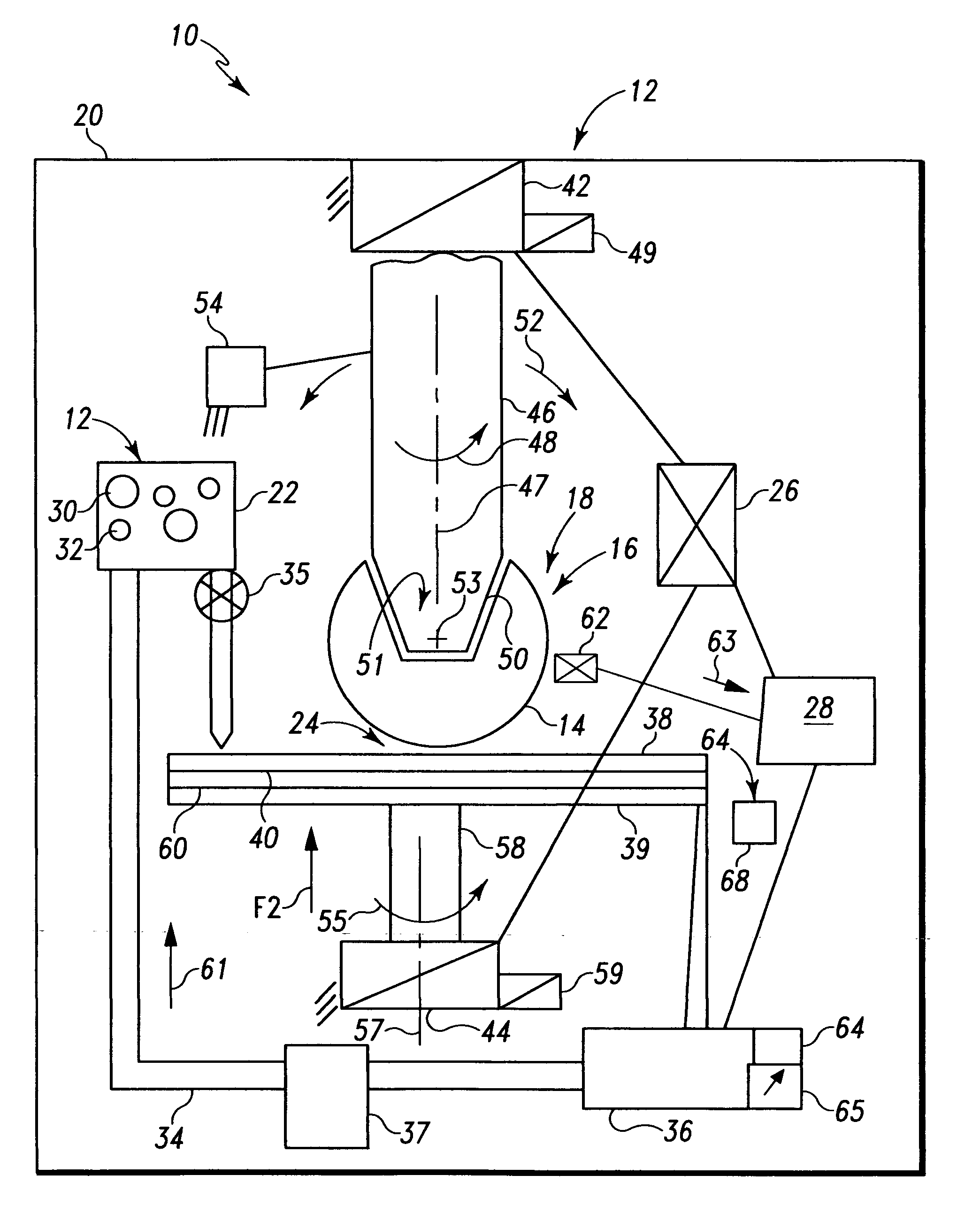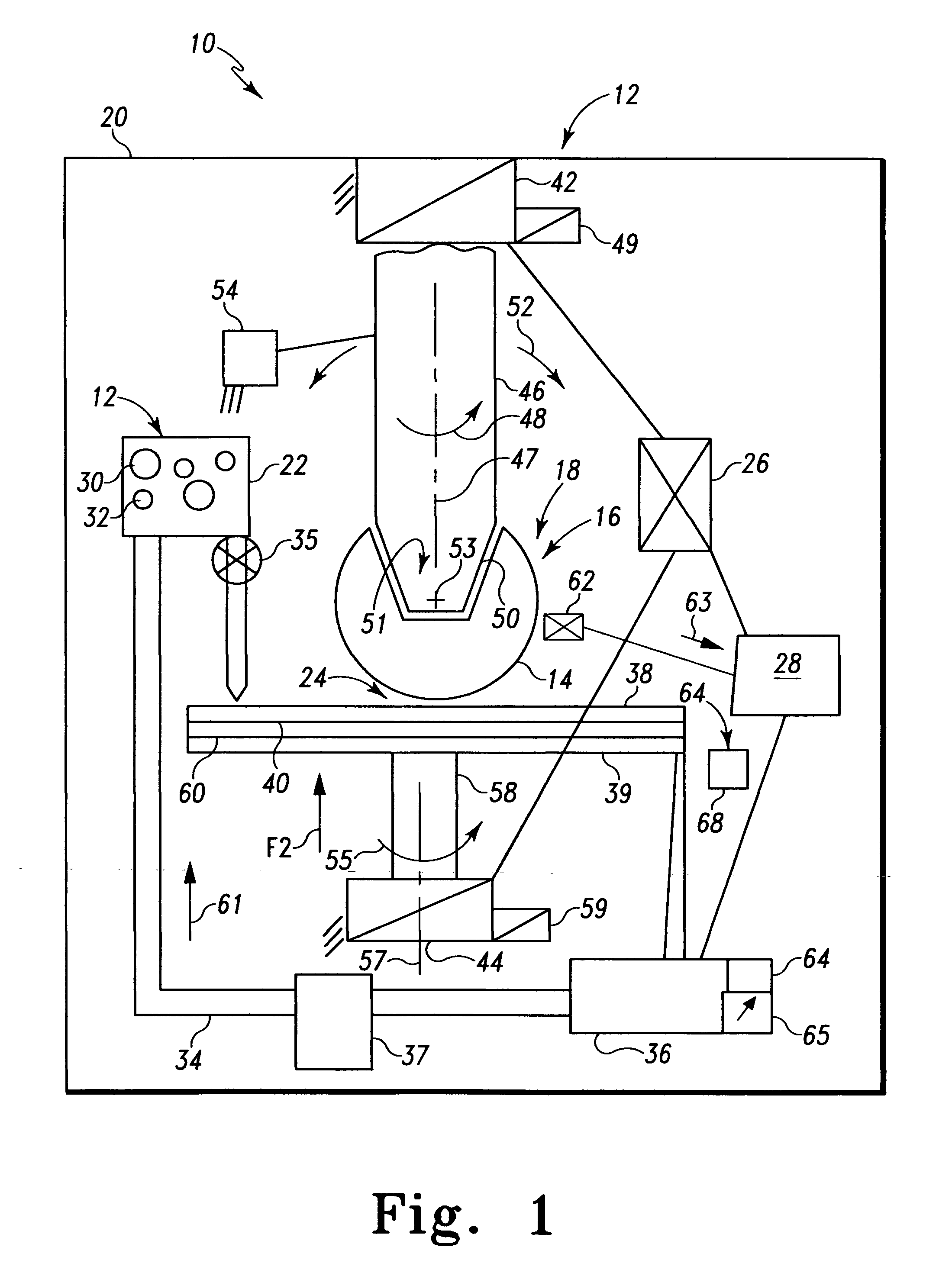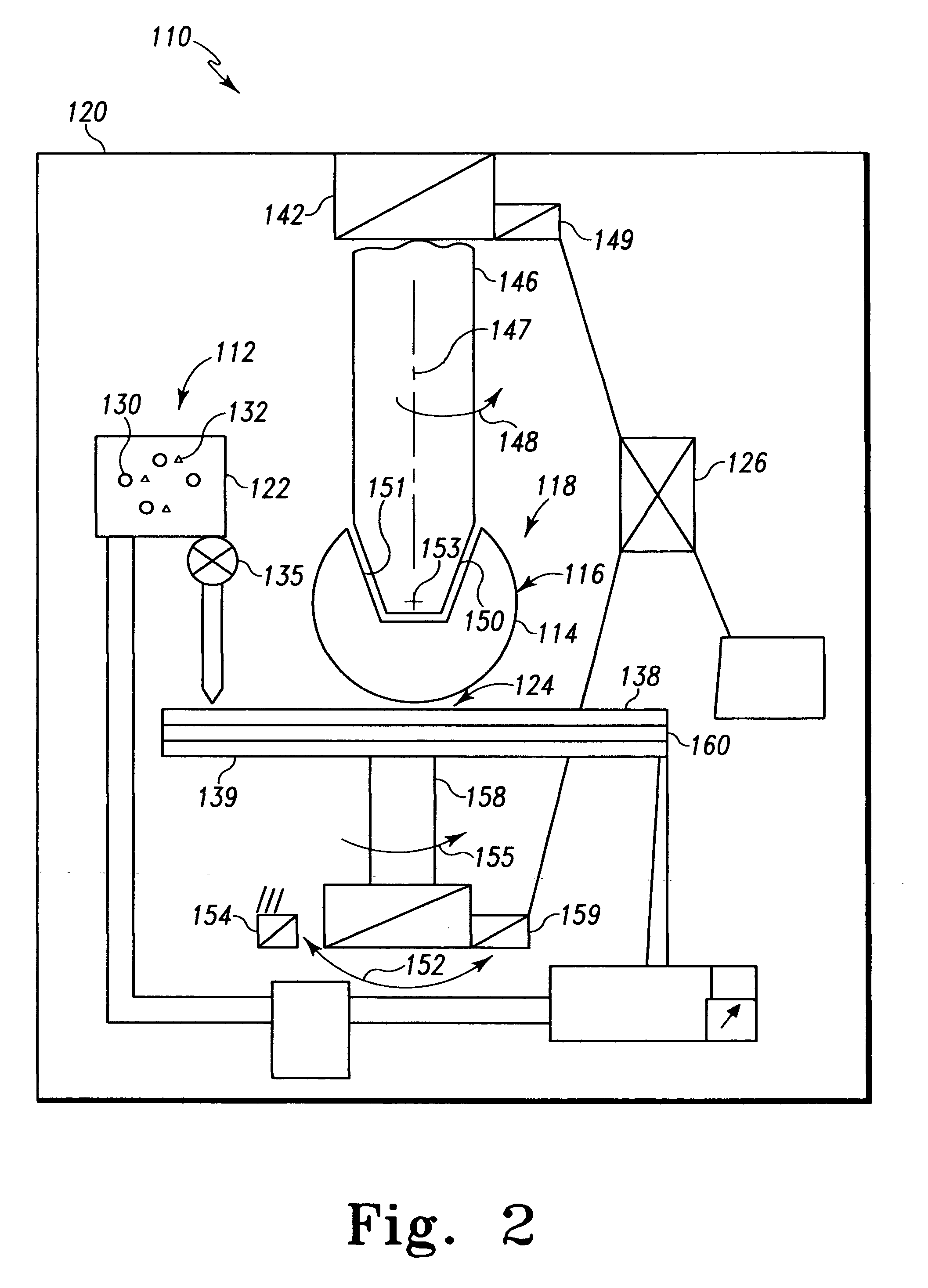Orthopaedic component manufacturing method and equipment
a manufacturing method and orthopaedic technology, applied in the field of orthopaedics, can solve the problems of stress on joints or damage to joints in the body, wear and tear of cartilage, and damage to other connective tissues such as tendons or ligaments, so as to prolong the life of the orthopaedic implant, reduce break-in wear, and smoke average surface finish
- Summary
- Abstract
- Description
- Claims
- Application Information
AI Technical Summary
Benefits of technology
Problems solved by technology
Method used
Image
Examples
Embodiment Construction
[0087]Embodiments of the present invention and the advantages thereof are best understood by referring to the following descriptions and drawings, wherein like numerals are used for like and corresponding parts of the drawings.
[0088]In CMP of metals, it is generally found necessary to add an oxidizer. This is equivalent to increasing the electrode potential. By proper selection of pH and oxidizer, the metal removal rates and surface finish may be optimized.
[0089]Other chemical modifiers that may be added to the abrasive slurry include buffers, surfactants, complexing agents and inhibitors. Buffering reagents help maintain a constant pH during the CMP process. Complexing agents tie up or sequester material removed in the CMP process. This has the effect of changing the equilibrium concentration and can increase removal rates. Surfactants change the surface tension between the abrasive and the surrounding solution and increase the wetting of the slurry to the polished object. Finally,...
PUM
| Property | Measurement | Unit |
|---|---|---|
| angle | aaaaa | aaaaa |
| rms surface roughness | aaaaa | aaaaa |
| rms surface roughness | aaaaa | aaaaa |
Abstract
Description
Claims
Application Information
 Login to View More
Login to View More - R&D
- Intellectual Property
- Life Sciences
- Materials
- Tech Scout
- Unparalleled Data Quality
- Higher Quality Content
- 60% Fewer Hallucinations
Browse by: Latest US Patents, China's latest patents, Technical Efficacy Thesaurus, Application Domain, Technology Topic, Popular Technical Reports.
© 2025 PatSnap. All rights reserved.Legal|Privacy policy|Modern Slavery Act Transparency Statement|Sitemap|About US| Contact US: help@patsnap.com



